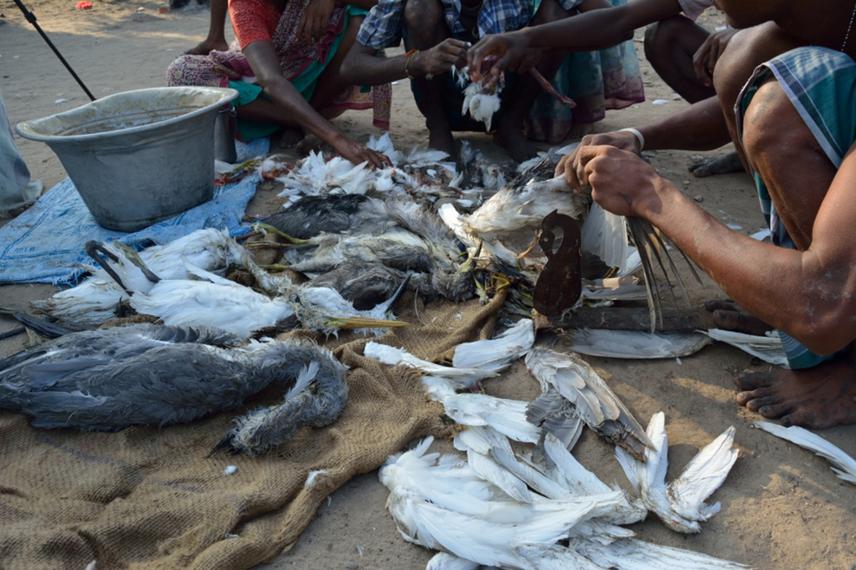Ramachandran R.
Understanding of the dynamics and market of illegal hunting, its spatio-temporal distribution, impacts and scale to devise effective management regimes that suit local needs and perceptions; thereby securing the future of wetlands and waterfowl communities across the landscape.

Illegally hunted waterfowl being dressed at a market place.
Beginning with the epoch of ‘Anthropocene’, hunting is known to be the most significant factor driving the extinction of several taxa. To this day hunting continues to undermine conservation efforts worldwide. While there have been several attempts to understand the dynamics and impacts of hunting on terrestrial large mammals, only a very few attempts have been made to understand the same with respect to wetland avifauna. Even in India, historic declines of wildlife have been attributed to hunting, and the enactment of The Wildlife (Protection) Act, 1972 – one of the stringent wildlife protection legislations in the world, is an acknowledgement of the same. Nevertheless, hunting is widespread and continues unabated even today. Illegal hunting, over the past decade, has caused local extinctions of several waterfowl species and complete loss of numerous heronries in Tamil Nadu, India. However, there have been no attempts to understand the dynamics of illegal hunting in these unprotected, yet biodiversity rich wetlands. Due to diffused ownership, vast majority of the wetlands fall outside the purview of protected areas and are primarily managed for a suite of ecosystem services rather than for biodiversity conservation. Nevertheless, these wetlands can potentially play a pivotal role in waterfowl conservation.
This study seeks to provide a strong scientific baseline to begin sustained monitoring of illegal hunting and devise strategies to minimize the same by understanding the dynamics and market of the trade. Insights gained through understanding the dynamics and market of illegal hunting will result in the identification of vulnerable areas, conduits and weaknesses in law enforcement and examine the feasibility of current conservation strategies. This will help determine whether current regulations are practical and if any policy level interventions are required for ecologically and socio-economically feasible management practices.
Unravelling the determinants of illegal hunting, mapping the demand-supply chain and understanding the dynamics, size, players and drivers of the market, being the key outcomes of the project, will guide us in devising strategic conservation measures that suit local needs and perceptions. Simultaneously, the project also aims to unravel the impacts of illegal hunting on waterfowl communities at species level to identify the most impacted species and prioritise future conservation actions. The data regarding avifaunal distribution, abundances and habitat use, collected during this study, will aid in identification of potential protected and improve the existing ones. Thus this study proceeds towards securing the future of wetlands and waterfowl communities across the landscape.